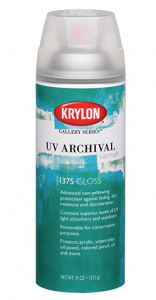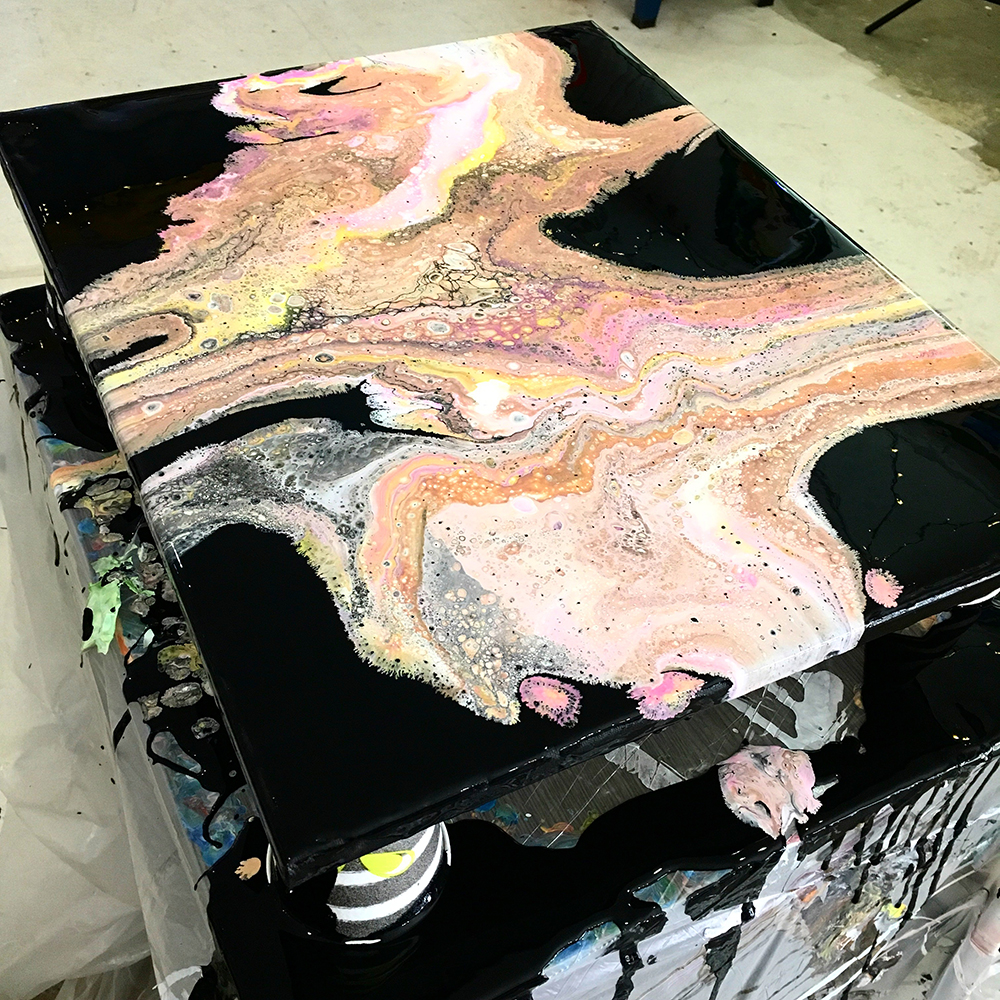
My last post about the art of Fluid Painting, also known as Paint Pouring explained the fascinating history and science of this popular art trend. This post will show you how to do it without spending a fortune.
A lot of art stores will steer you towards very expensive mediums to add to your paints to give them the fluid characteristics that you need for a good paint pour as well as heavy acrylics and pricy clear coats. However, I have found that for every high dollar product, there is an equivalent affordable substitute.
1. Fluid Mediums
Fine artists across the land have been using Liquitex products for years. And yes, it’s a great quality product for beginner and advanced acrylic fine artists. Liquitex creates vibrant, highly pigmented, archival quality paints. Good stuff. But when it comes to paint pouring, you are going to want to thin down your heavy acrylics with a fluid or flowing medium. Some people will recommend something such as Liquitex Gloss Medium. Which again is a lovely, well made product. It is however, rather expensive. You can get very similar results for less than half the cost, if you use Floetrol which is commonly referred to as Flood.
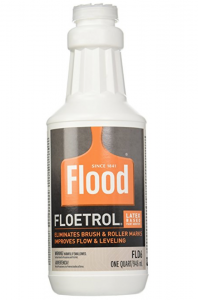 Flood is at least half the price of its Liquitex twin and the only real difference other than the price is that Flood tends to dry with a matte, non-gloss finish. Flood is traditionally used by house painters as an additive to help remove brush strokes and fluid artists have found it to be a great alternative to the expensive art store additives. You can easily find it online or at a home improvement store. If you want gloss, you can easily remedy that by using and inexpensive clear top coat when you paint is dry.
Flood is at least half the price of its Liquitex twin and the only real difference other than the price is that Flood tends to dry with a matte, non-gloss finish. Flood is traditionally used by house painters as an additive to help remove brush strokes and fluid artists have found it to be a great alternative to the expensive art store additives. You can easily find it online or at a home improvement store. If you want gloss, you can easily remedy that by using and inexpensive clear top coat when you paint is dry.
2. Paints
You really don’t need fancy paints to create beautiful fluid paintings. You are essentially mixing down or thinning out your paints with a fluid, self leveling base like Flood so that the base pigments are on equal footing with one another so that fluid dynamics can do its thing. See my last post on Paint Pouring for more info on how that works. You really don’t need highly pigmented fancy art store paint to achieve this. You can literally use dollar store craft paints or a simple craft set like this: 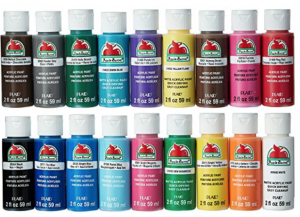
You can get all those colors for what it costs to get a few tubes of “art store” paint.
3. Canvas
Who says you have to fluid paint on canvas? You don’t. You can paint pour on wood, rocks, things you find in the yard or yes, canvas. If you want to use canvas I recommend starting small and starting cheap. There is SO much to be said for having the freedom to experiment and when you can buy a canvas for around a buck, you just might be able to feel that sense of freedom to truly explore the medium. The dollar store often sells canvas so take a look there. Or look for things at thrift stores like boards that you can paint over. Also, Michaels arts and craft store almost always has a coupon online. Look there before you ever pay full price for a craft item. If you plan it you can hit that craft store or a similar one when they are having a sale and stock up on some value pack canvases. Get small ones until you feel you really need to spread that paint out n something larger. Bigger isn’t always better. You can also find perfectly good deals at online super-stores like Amazon.
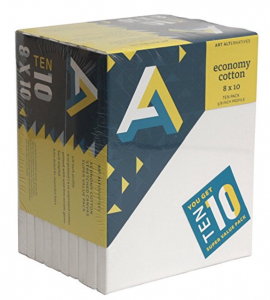
After you have experimented with inexpensive canvas, by all means invest in some quality canvases. There certainly is a difference here, but there is no reason why you cant make something beautiful on something affordable and if you decide to perfect your work, invest in better canvas later.
4. Top Coat
One issue, as I mentioned above, with using Flood instead of a fancy Liquitex or Golden brand fluid-paint additive is that your finished work will dry matte instead of glossy. Maybe you like that look and that is great if you do, but if you want to pull out some of the contrast between your colors and want to protect the pieces or give them a high gloss slick finish, then try a cheap spray-on, top-coat. You can get them at a dollar store, a craft store or at a home improvement store or online. The best choice is a non yellowing or “archival” clear spray but any clear coat should work. If you want to get fancy, you can learn how to resin coat your pieces which is something I have been experimenting with and I will share in a future post. You can invest in fancy protective coats but really a midrange spray like the one below is absolutely fine.
Those are my tips to paint pour on a budget! If you have any questions or suggestions, leave them in the comments and happy painting!!!

